While we’re all waiting for the new all-electric Nissan Leaf and Nissan Micra to arrive, there’s nothing that’s fully electric in Nissan’s line-up.
What it does have, though, is a petrol-powered car that thinks it’s an EV – and does a very good job of giving anyone nervous about going fully electric an opportunity to see what it might be like.
The Nissan Qashqai e-Power has just been revamped to make it feel more like an electric car than ever.
The e-Power system uses a 1.5-litre petrol engine solely to generate electricity, which powers the car’s front wheels via an electric motor. The engine also charges a small 2.1kWh battery through an inverter, but never directly drives the wheels as in conventional hybrids.
Additionally, regenerative braking captures kinetic energy during deceleration and stores it in the battery, similar to EVs and full hybrids.
The Qashqai e-Power operates in a manner similar to an electric vehicle, offering immediate acceleration and eliminating gear shifts, while the petrol engine supplies the necessary power.
This latest model is more powerful than before, more efficient than before and should be cheaper to run than before.
Nissan has also taken this as an opportunity for a mild tweak to other aspects of the Qashqai with revisions to its Google-powered infotainment and its ProPilot autonomous driving features.
How we tested
Despite many hours driving the latest British-built Qashqai on UK roads, it was Spain where I was invited to drive the latest Qashqai e-Power, just south of Barcelona on the streets and motorways down towards Sitges. As well as long drives, I reacquainted myself with the Qashqai, checking on the space and quality that the car offers.
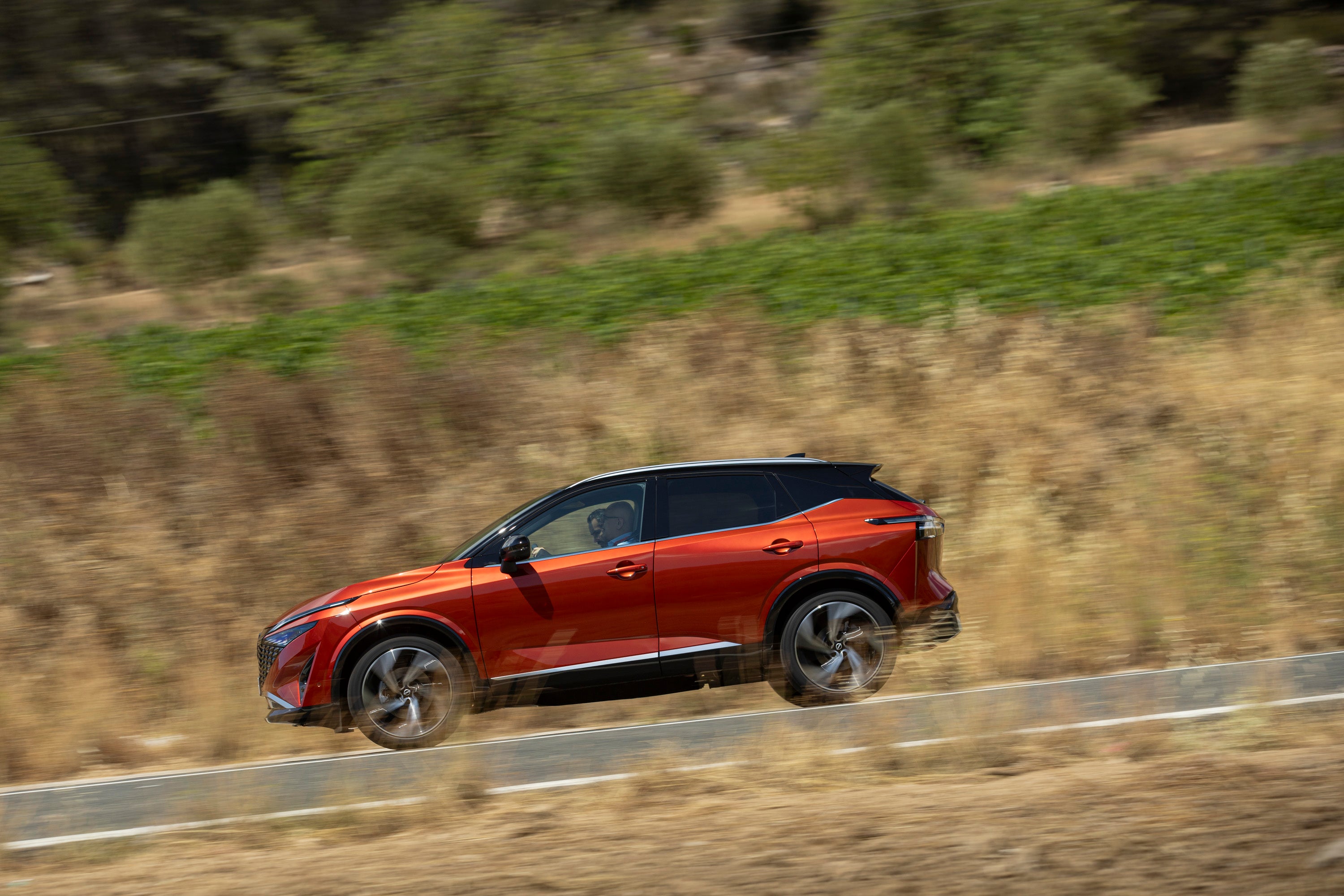
Independent rating: 7/10
- Pros: Real EV feel around town, improved refinement on the motorway
- Cons: Material quality not the best, imperfect ride
Nissan Qashqai e-Power specs
- Price range: £34,860 to £43,210
- Battery size: 2.1kWw
- Engine: 1.5-litre petrol
- Claimed mpg: 64
Battery, range, charging, performance and drive
This is as close as you can get to an EV without a plug. There’s a 1.5-litre petrol engine that’s used to generate electricity to power an electric motor that drives the front wheels or charge the tiny 2.1kWh battery. At no time does the petrol engine drive the wheels.
While you’re aware of the buzz of a petrol engine running away to itself, it’s near silent most of the time, especially when you’re running around town. Ask for more power for instant acceleration – and acceleration is pretty instant as it is in an EV – and you’ll here the engine rev and continue to rev, especially on the motorway.
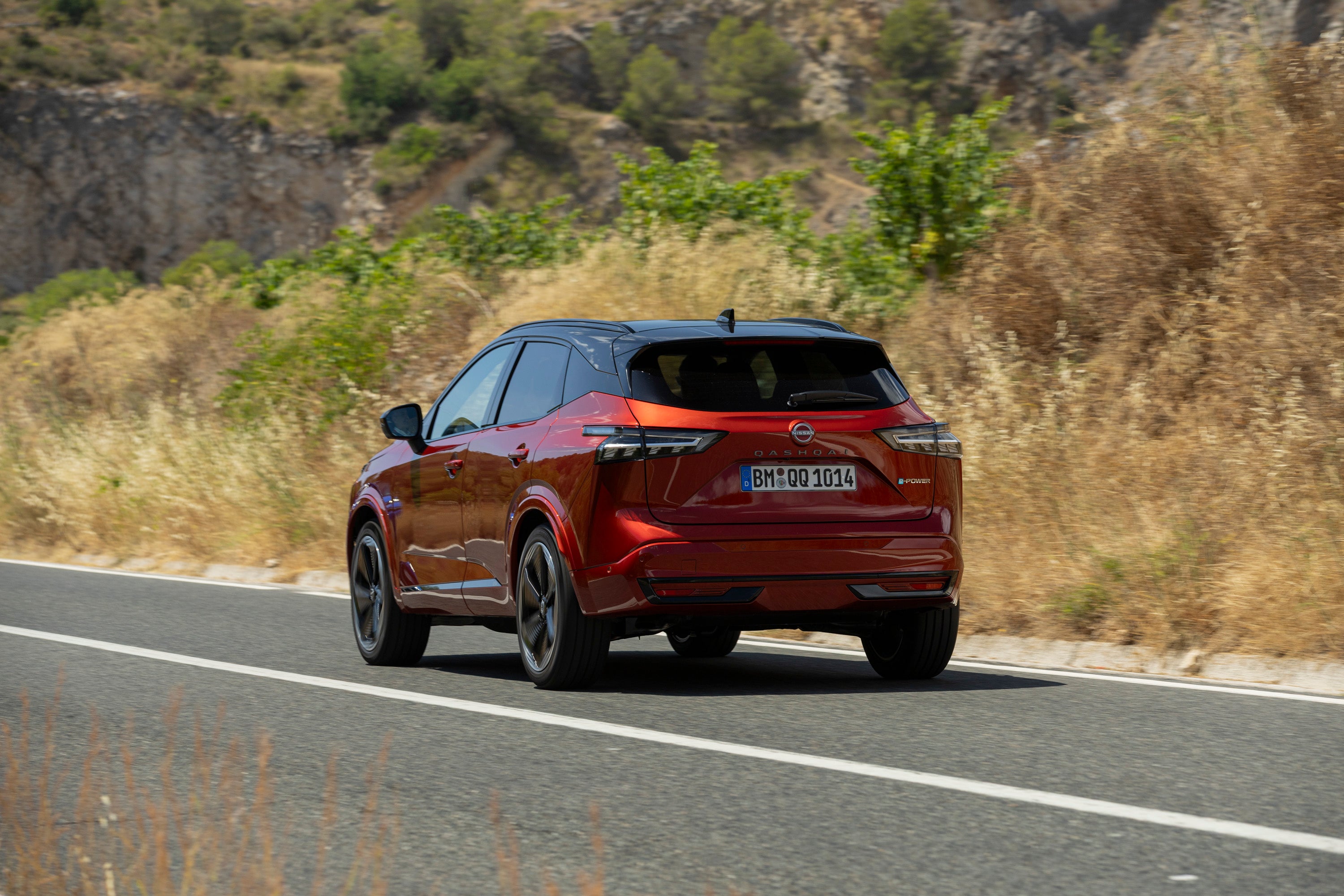
However, while not as silent as a pure EV, the Qashqai e-Power isn’t as noisy as a petrol or diesel engine can be. Nissan has worked hard on sound deadening in this latest model to reduce noise by 5.6 decibels compared with the previous model.
As with an EV there’s an auto gearbox that makes driving the Qashqai a doddle. And as petrol-powered cars go, efficiency looks good with an expected average of 62mpg meaning a total range of 745 miles on one tank of fuel.
So the drivetrain is impressive, but the rest of the Qashqai is less so. You’re not short of choice in the mid-size SUV market, electric or otherwise. And sadly, the Qashqai has never been near the top of the class.
It’s far from a bad car, but it just lacks the all-round appeal of rivals. Lesser models feel a bit cheap inside, the ride isn’t as comfy as some cars and the price seems high when there are lookalike models from the likes of Omoda available for less.
Interior, practicality and boot space
The Nissan Qashqai’s interior does a decent job of blending practicality with a hint of upmarket ambition, though it doesn’t quite hit the premium heights some rivals now manage.
The dashboard layout is clear and the controls are where you’d expect, but some of the plastics – particularly lower down – still feel a bit workmanlike.
Space is good though. There’s decent room up front and enough in the back for adults on shorter trips, though taller passengers might find knee-room tight on longer journeys. You sit high, which drivers will appreciate, but the seats themselves can feel flat over time.
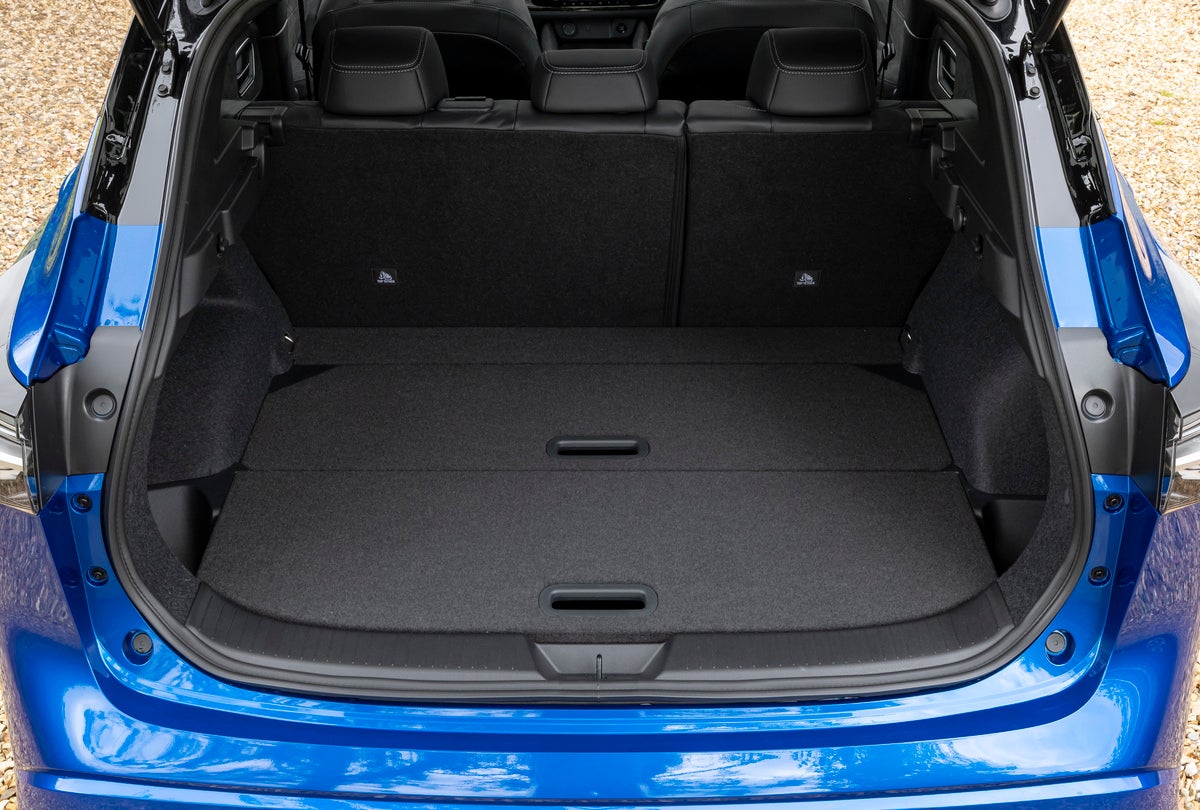
Where Nissan has always scored is on in-car practicality and there are loads of useful spaces to put things. I’ve visited Nissan’s engineering base in the UK and they take great pleasure in showing you the racks of odds and ends – from child seats to bizarrely-shaped cups – that they make sure they can fit inside a Qashqai.
The boot is usefully shaped and competitive at 504 litres, with an adjustable floor and no annoying load lip – but it’s not class-leading. Overall, it’s practical in all the right places, but don’t expect it to surprise or delight. It’s functional more than fabulous.
Technology, stereo and infotainment
Nissan’s Alliance with Renault means that the two companies share a relationship with Google – a good thing as far as in-car tech is concerned. So the widescreen 12.3in infotainment system in the Qashqai is Google powered with Google Maps, Google Assistant – including ‘hey Google’ voice command – and access to apps on the Google Play Store.
It’s not all about voice control and Google, though – the inclusion of physical shortcut buttons is welcome, making it easier to switch between functions on the move. Apple CarPlay and Android Auto are standard, with wireless CarPlay on some versions.
The stereo is average unless you opt for the Bose system on top-spec models – which adds clarity and punch, but still isn’t as immersive as the best out there.
You can get some real premium car tech inside with everything from a head-up display and massaging seats to multi-colour ambient lighting and a heated steering wheel.
Nissan’s ProPilot adaptive driving system has always been good and now features enhanced multi-lane autonomous driving for improved traffic monitoring and environmental awareness – in our tests on the Spanish motorway it drove well.
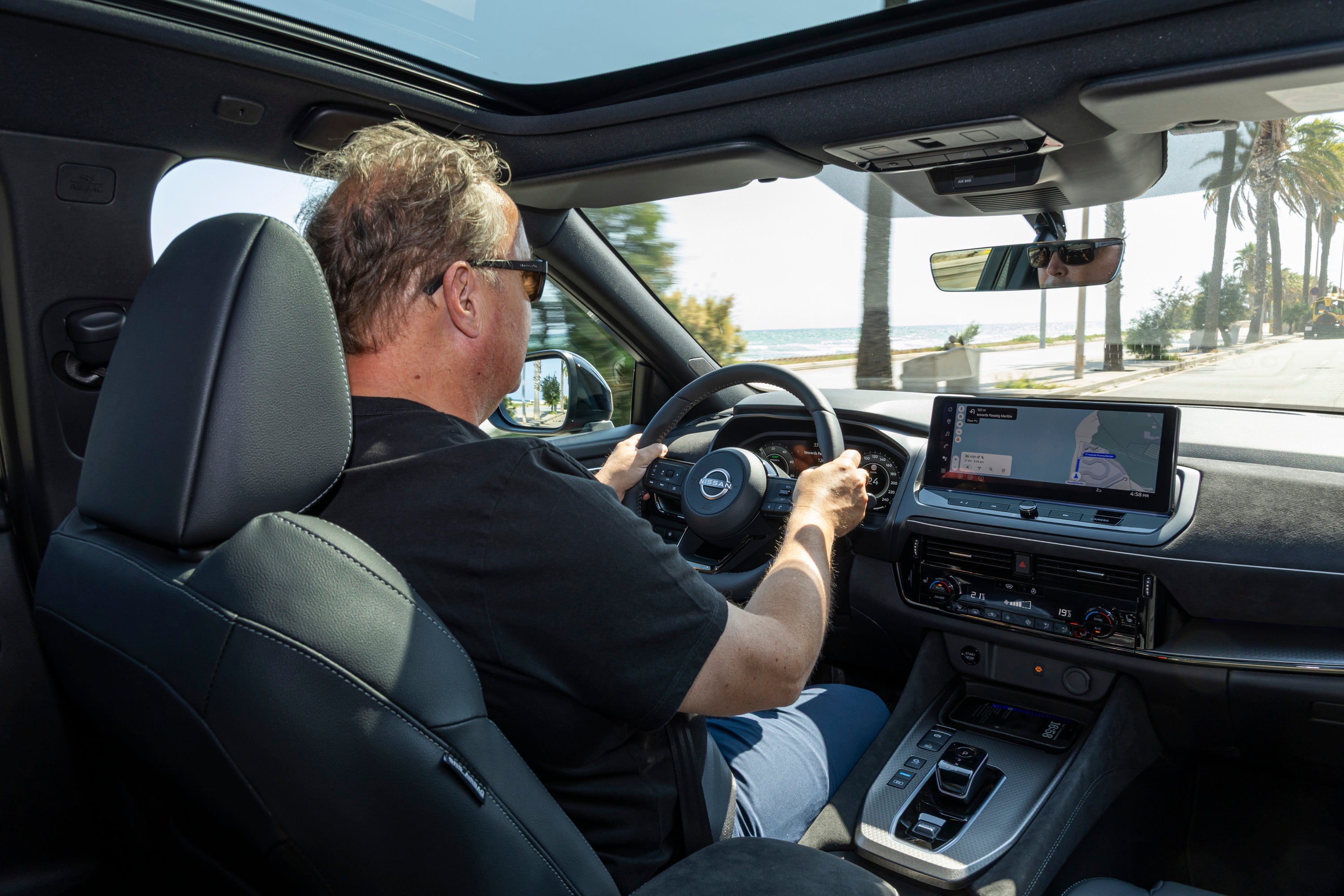
Prices and running costs
You’re not short of choice with the Qashqai e-Power with five different trim levels to choose from. There’s a wide spread of prices, too, ranging from £34,860 to £43,210. In my view the Qashqai looks and feels more like a car in the low- to mid-£30,000s than something in the mid-£40,000s.
That’s especially the case with the likes of the Jaecoo 7 and Omoda 5 around, the latter looking amazingly similar to the Qashqai.
In terms of petrol-powered vehicles, the efficiency is pretty good with an estimated average fuel consumption of 62mpg, providing a total range of approximately 745 miles on a single tank.
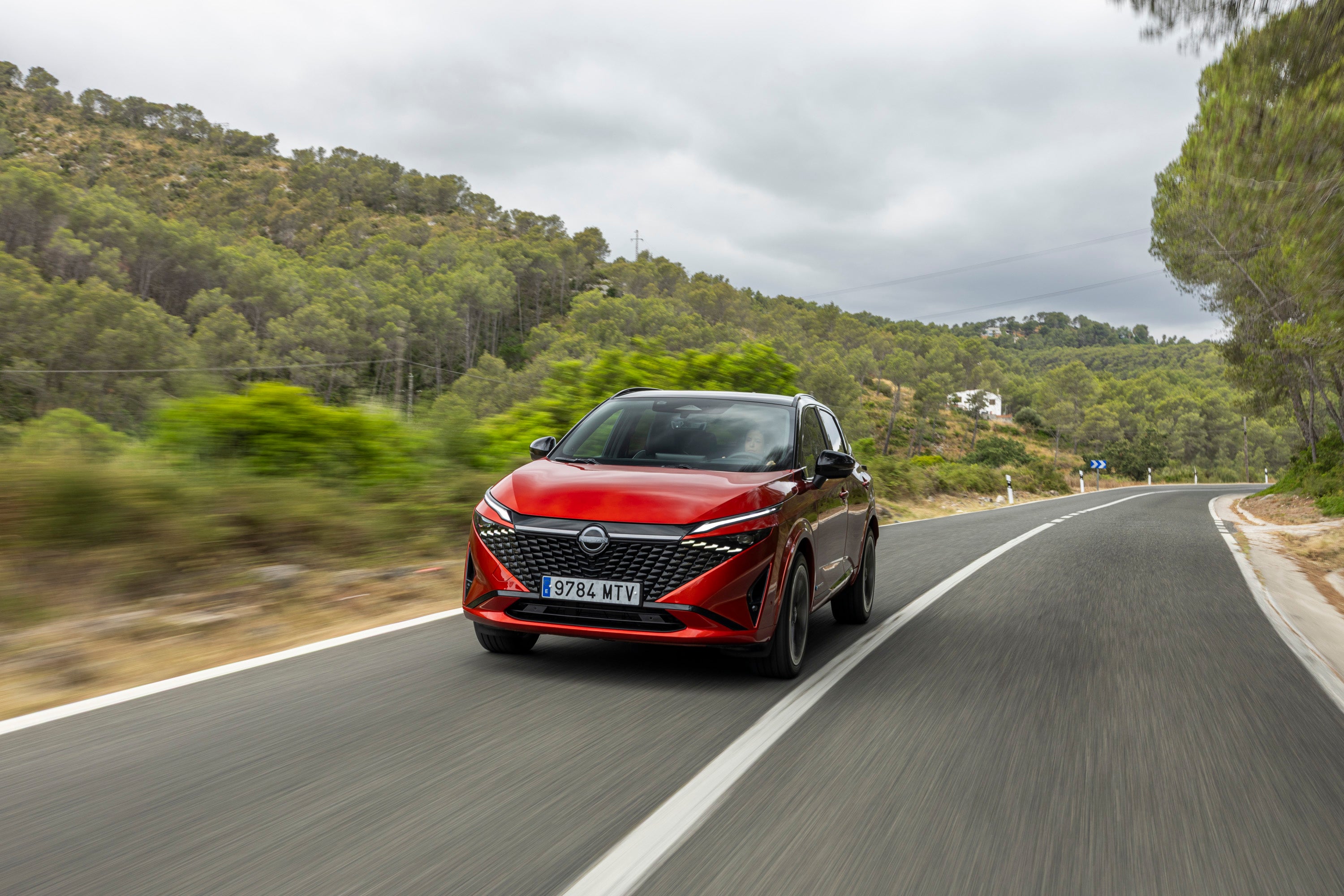
Nissan Qashqai e-Power rivals
FAQs
How much does it cost – is it worth it?
You’ll probably want to avoid more expensive models in the £40,000s, but I reckon the sweet spot is the N-Connecta model which gets a good look and a decent amount of tech.
Does Nissan replace batteries for free?
There’s eight years or 100,000 mile cover for the battery pack, five years on EV components and a three-year or 60,000 mile warranty on the rest of the car.
Why trust us
Our team of motoring experts have decades of experience driving, reviewing and reporting on the latest EV cars, and our verdicts are reached with every kind of driver in mind. We thoroughly test drive every car we recommend, so you can be sure our verdicts are honest, unbiased and authentic.
The verdict: Nissan Qashqai e-Power
If you’re thinking of going electric, but the plugging in part is problematic, the Qashqai e-Power makes a strong case for itself. Around town you’d genuinely think you were driving an EV – it’s hushed and smooth. This latest version is more efficient and quieter on the motorway, too. But as much as the tech is impressive, the Qashqai itself is merely an also-ran amongst a sea of excellent family SUVs.


